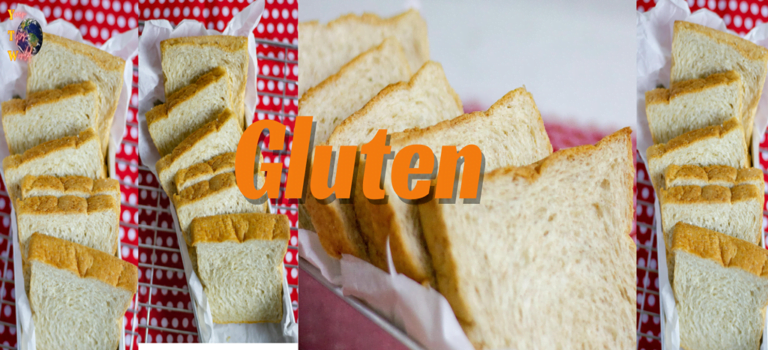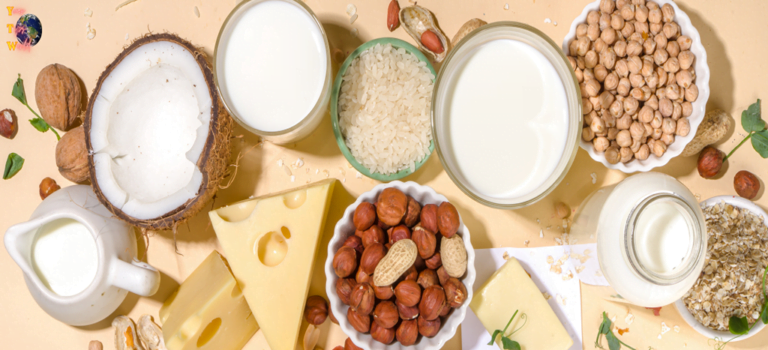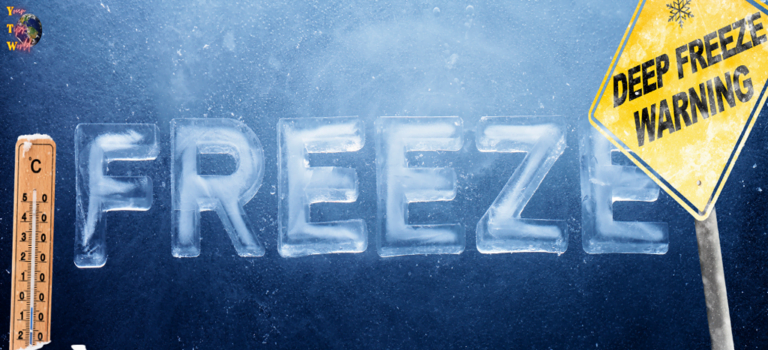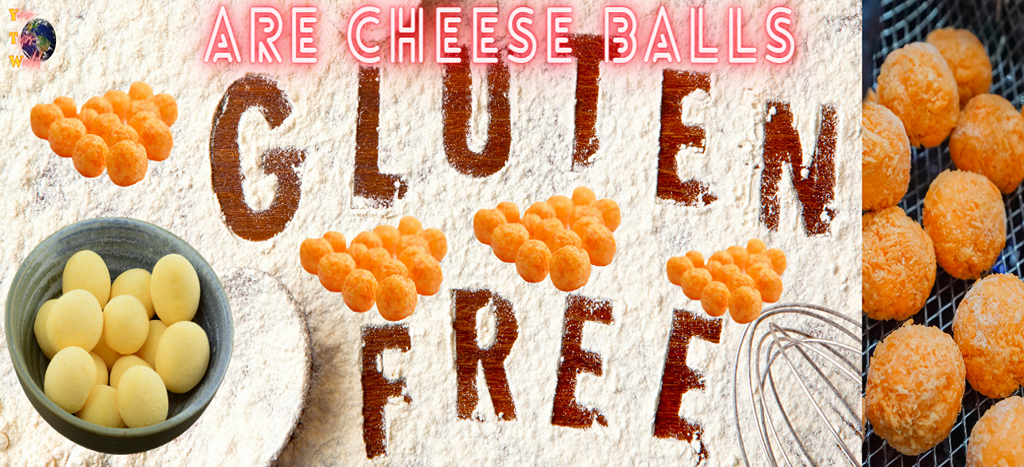Do you have the craving for those round and yummy cheese balls?
But, you can not pick those because you are sensitive to gluten.
So here is the detailed answer to your biggest question “Are Cheese Balls Gluten Free?”
Cheese balls are a beloved snack that combines the creamy richness of cheese with a delightful crunch.
The people following a gluten-free diet or dealing with gluten sensitivity, may wonder “Are cheese balls gluten-free?”
I have tried to answer this prominent question in this detailed and comprehensive post.
We will go deep into the world of cheese balls, explaining what gluten is, detailing traditional cheese ball ingredients, exploring gluten-free substitutes and recipes, and elaborating on tips for enjoying cheese balls safely on a gluten-free diet.
Understanding What is Gluten and Gluten Sensitivity:

In our way to find the answer to “Are Cheese Balls Gluten Free?”, We will first focus on what gluten is.
So definition-wise, Gluten is a kind of protein that is found in wheat, barley, and rye, along with their derivatives.
For people suffering from celiac disease or with gluten sensitivity, consuming gluten may cause some adverse reactions. Common symptoms of such reactions may be Headaches, Digestive issues, fatigue, and more.
Are Traditional Cheese Balls Gluten Free?

When we talk about Traditional cheese balls, their recipes typically consist of cheese, herbs, spices, and breadcrumbs.
The Cheese itself is Gluten-free but the inclusion of Breadcrumbs in some recipes is the major concern when it comes to avoiding gluten for people.
Breadcrumbs are commonly made from wheat or other gluten-containing grains. So, traditional cheese balls are not a suitable option for people looking for/on a gluten-free diet.
What Are Cheese Balls Gluten Free Alternatives:

In search of what are cheese balls gluten free options, we found that Thankfully there are some gluten free alternatives and modifications that allow you to enjoy cheese balls without gluten.
Rice flour comes as a savior here as the breadcrumbs made of it are gluten-free so it offers a great option to replace regular breadcrumbs.
Other considerations are breadcrumbs made of cornmeal or gluten-free cereals.
Another prominent alternative is to use crushed gluten-free crackers or nuts as a coating for the cheese balls.
Additionally, thickeners such as almond flour or gluten-free all-purpose flour to bind the cheese ball mixture together are also open for your experiments.
Gluten Free Cheese balls bought from Stores:
Nowadays, many shops and stores provide gluten-free cheese balls so If you prefer the comfort and ease of pre-packaged snacks, then you can opt for this option and get it from the stores.
generally, products labeled as gluten-free are manufactured in a restricted gluten free environment to minimize the cross-contamination risks.
When buying such products, try to look for similar kind of certifications that ensures that the said product is gluten-free and safe to consume as per your dietary needs.
Gluten Free Cheese Puffs:

earlier it was “Are cheese balls gluten free?” and now it is “Are cheese puffs gluten free”. Cheese balls have a very close relative known as “Cheese puffs”.
So for your cheesy delight cravings, Cheese Puffs are an excellent gluten free replacement to satisfy them. Generally, gluten free ingredients like tapioca starch or alternative flours are used to make gluten free Cheese puffs.
These cheese puffs possess a crunchy, fluffy texture which is somewhat similar to cheese balls. Do some Experiments with flavors like cheddar, parmesan, or even spicy variations to find your favorite gluten-free cheese puff recipe.
Are cheese balls gluten free can be made at home?
Yesss!! It is cheesy-peasy to make cheese balls at home. the best part of doing this is that you can customize the ingredients and can be assured that they are gluten free.
So, to make gluten-free cheese balls, you need a base of gluten-free cheese and experiment with a variety of gluten-free coatings and additions.
Use gluten free breadcrumbs, crushed gluten free crackers, or take a mixture of spices and herbs to give flavor and texture to your yummy and tasty homemade gluten-free cheese balls.
Tips for Enjoying Cheese Balls Safely:
Adhering to a gluten-free diet requires attention to detail to avoid cross-contamination and inadvertent gluten exposure.
When enjoying store-bought cheese balls or attending events where cheese balls are served, it’s crucial to read labels, verify gluten-free certifications, and ask about the preparation process.
If you are not sure about the ingredients or the methods used to cook it, you can definitely and safely opt for homemade gluten-free cheese balls or gluten-free cheese puffs as alternatives.
Final words on Are Cheese balls Gluten Free

So all in all, where the traditional cheese balls often contain gluten-containing ingredients like breadcrumbs, there are many gluten-free options also available.
By opting for gluten-free alternatives, modifying recipes, or exploring homemade gluten-free cheese ball variations, you can still enjoy this delightful snack on a gluten-free diet.
Remember to prioritize careful label reading, cross-contamination avoidance, and communication when enjoying cheese balls outside your home.
You can surely and safely savor the cheesy delight and goodness of gluten free cheeseballs with the help of the right ingredients and precautions.
It is always beneficial to consult your healthcare professional or dietitian if you have any specific dietary needs or issues.
So fasten your seatbelts to enjoy the journey of cheese balls by embracing gluten-free alternatives and enjoy the indulgent pleasure of cheese balls while adhering to your gluten-free lifestyle.
Common Questions for Cheese Balls:
Health Benefits of Cheese Balls

are cheese balls healthy?
Depending on two aspects, the answer can be Yes or No.
No, As mostly the Cheese balls are deep fried and are high in calories, sodium, and fat.
Generally, it contains a processed form of cheese which is again high in saturated fat. As per reports, the risk of heart disease increases on consuming processed cheese in high quantities.
Yes, If you are after a healthier alternative, for example, baked cheese balls using whole wheat bread crumbs with reduced-fat cheese made at home is a healthy alternative.
By this, you have full control over ingredients used and eliminate or reduce unhealthy things like fats and sodium.
Moderate consumption as a part of a balanced diet is highly advised to keep it healthy way of eating.
are utz cheese balls gluten free?
Yes, Utz Cheese Balls are gluten-free.
Real cheddar cheese is used to make those and it is known as certified gluten-free.
One important thing to consider here is that though the product is known to be gluten-free the facility in which it was manufactured plays a crucial role in making it gluten free or not due to cross-contamination.
Checking the package or connecting with the manufacturer can be a fruitful way to get accurate information on specific products.
Freezing Cheese Balls

can i freeze a cheese ball? Or can you freeze a homemade cheese ball? Or can you freeze cheese balls?
Yes, you can freeze a cheese ball as it is going to extend its shelf life. this way you can enjoy it at a later time as per your cravings.
Following are the steps to follow in freezing the cheese balls:
Wrapping it up: Wrap the cheese balls in a plastic wrap tightly. and cover it completely to avoid freezer burns and keep it fresh.
Place the wrap in a freezer bag: further, place the wrapped cheese balls in a resealable freezer bag after vacuuming out any excess air through pressing, and then seal the bag tightly.
Label and date the bag: Labelling with date is a recommended practice so that you will track the storage time of the bag.
Freeze it up: Finally, Place the bag with the wrapped cheese ball in the freezer and store it in a flat position to prevent any deformation.
To consume the cheese balls when you want to enjoy them, take them out from the freezer and let them thaw in the fridge overnight. do not thaw it at room temperature as it may get harmful bacteria growth in it. Once thawed, you can serve the cheese ball as desired.
One important point to consider here is that on freezing and thawing, the texture of the cheese ball may change slightly. Some slight moisture separation could occur, but this should not affect the overall taste or safety of the cheese ball.
can i freeze mozzarella cheese balls? Or can you freeze fresh mozzarella cheese balls?
Yes, you can freeze mozzarella cheese balls as it is going to extend their shelf life. this way you can enjoy it at a later time as per your cravings.
Following are the steps to follow in freezing the mozzarella cheese balls:
Draining the cheese balls: Drain the liquid before freezing the mozzarella cheese balls if they are stored in liquid then Pat them dry with a paper towel if required.
Wrapping it up: Wrap the cheese balls in a plastic wrap tightly. and cover it completely to avoid freezer burns and keep it fresh.
Place the wrap in a freezer bag: further, place the wrapped cheese balls in a resealable freezer bag after vacuuming out any excess air through pressing, and then seal the bag tightly.
Label and date the bag: Labelling with date is a recommended practice so that you will track the storage time of the bag.
Freeze it up: Finally, Place the bag with the wrapped cheese ball in the freezer and store it in a flat position to prevent any deformation.
To consume the frozen mozzarella cheese balls, take out the desired amount from the freezer and let it thaw in the fridge overnight. do not thaw it at room temperature as it may get harmful bacterial growth in it.
Once thawed, salads, pasta dishes, or other recipes are ready to incorporate these cheese balls as desired.
A major point to focus on here is that the texture may change slightly after the above process.
They may become slightly softer or more crumbly compared to their original fresh state, but, they should still be safe to consume and can be used in recipes where texture is not crucial, such as melted or cooked dishes.
can you freeze a cheese ball made with cream cheese? Or can you freeze a cream cheese cheese ball?
Yes, you can freeze a cheese ball made with cream cheese as it is going to extend its shelf life. this way you can enjoy it at a later time as per your cravings.
Here’s how you can freeze a cream cheese-based cheese ball:
Shape the cheese ball: Prepare the cheese balls as desired, incorporating cream cheese and any other ingredients you prefer.
Place the wrap in a freezer bag: further, place the wrapped cheese balls in a resealable freezer bag after vacuuming out any excess air through pressing, and then seal the bag tightly.
Label and date the bag: Labelling with date is a recommended practice so that you will track the storage time of the bag.
Freeze it up: Finally, Place the bag with the wrapped cheese ball in the freezer and store it in a flat position to prevent any deformation.
To consume the cream cheese-based cheese balls when you want to enjoy it, take them out from the freezer and let them thaw in the fridge overnight.
do not thaw it at room temperature as it may get harmful bacterial growth in it. Once thawed, you can serve the cheese ball as desired.
One important point to consider here is that on freezing and thawing, the texture of cream cheese-based cheese balls may change slightly. Some slight moisture separation could occur, but this should not affect the overall taste or safety of the cheese ball.
how long does a cheese ball last in the refrigerator? Or how long will a cheese ball last in the refrigerator?
A cheese ball can typically last in the refrigerator for about 3 to 5 days. The actual shelf life may differ based on its ingredients and storage conditions.
To gain the longevity of cheese balls’ shelf life and freshness, it is very critical to focus on their storage properly.
A few tips for the same are below:
Wrap it tightly: After making or purchasing a cheese ball, wrap it tightly in plastic wrap or place it in an airtight container to prevent it from drying out and absorbing Odors from other foods in the refrigerator.
Store in the coldest part of the refrigerator: Keep the cheese ball in the coldest part of the refrigerator, such as the lower shelf towards the back. This helps maintain a consistent temperature and extends its shelf life.
Handle with clean hands or utensils: When serving the cheese ball, always use clean hands or utensils to avoid introducing bacteria that could potentially spoil the cheese.
Never leave the cheese balls at room temperature for 2 hours or more. it is recommended to discard if this is the case as there are high chances of harmful bacterial growth in this course of time.
Always use your best judgment and consider the quality, smell, and appearance of the cheese ball before consuming it.
Count of Cheese Balls per container

how many cheese balls in a container? Or how many cheese balls are in a container? Or how many cheeseballs are in a cheese ball container?
The count of cheese balls filled in a container is dependent on various factors like Size, Brand, packaging, etc.
This information can be found generally on the packaging or labels on the container. the quantity can range from a few servings to a larger quantity, such as a barrel or tub.
Most of the time the exact number of cheese balls inside a container is printed on the packaging or label of that specific product.
It may be present either front or back of the packaging. One can find the relevant information for a specific product on the internet by searching for it.
how many cheese balls are in a 20, 23, 28, 35 oz container?
The count of cheese balls filled in a container is dependent on various factors like Size, Brand, packaging, etc. A general estimate as per different container sizes for cheese balls is given below:
20 oz container: Approximately 40 to 60 cheese balls can be present in a 20 oz container in proportion to the size of the individual cheese balls.
23 oz container: A 23 oz container might typically contain around 45 to 70 cheese balls, depending on their size.
28 oz container: A 28 oz container could typically contain approximately 55 to 85 cheese balls, depending on the size.
35 oz container: This larger container size may typically contain around 70 to 110 cheese balls, depending on the size of the cheese balls.
Kindly note that the above numbers are approximate and have a direct relationship with the brand, size of cheese balls, and packaging.
Always check the information present on labels or packaging for the same info on the container.
Pets and Cheese Balls effects

can cats eat cheese balls?
Generally, processed cheese products are not recommended to feed cats.
Cats are known as carnivores by nature so their primary diet is all around meat whereas, cheese balls contain high fat, salts, and other artificial ingredients that may be harmful.
Some cats are also intolerant to lactose so they either cannot digest it or have great difficulty in digesting the sugar found in milk or dairy products.
If cheese balls are fed to such cats then it may result in digestive issues like diarrhoea or upset stomach.
If you really love your cat and want to offer a treat to her, then always opt for treats specific to cats which safe and nutritionally appropriate for them.
A few examples are small amounts of cooked, boneless, and unseasoned meat or commercially available treats for cats only.
Always consult your veterinarian before introducing anything new to cats.
can dogs eat cheese balls? Or can dogs have cheese balls?
Dogs are more tempted towards cheese balls. Still, it is not a recommended item to include in their diet.
Dogs are prone to Obesity and Cheese balls aid in this as it is high-calorized, fatty, and have sodium.
Cheese balls can also cause gastrointestinal upset and other health issues in dogs.
Additionally, some dogs are also intolerant to lactose so they either cannot digest it or have great difficulty in digesting the sugar found in milk or dairy products.
If cheese balls are fed to them, then it may result in digestive issues like diarrhea or upset stomach.
Always choose dog-specific treats to offer a favor. Many commercially available dog-only treats derived for canine dietary needs are available in the market.
Having said that, always consult with your vet to make sure that your feeds for the dog are safe and suitable for its needs.
How and Where to Buy Cheese balls

where to buy a cheese ball? Or where to buy cheese balls?
You can buy cheese balls from various places, including:
Online retailers: Websites like Amazon.com and other online grocery stores often carry a variety of cheese ball options. You can browse their selection and have the cheese balls delivered to your doorstep.
Local grocery stores: Many supermarkets and grocery stores have a snacks or junk food aisle where you can find pre-packaged cheese balls. Check the snack aisle or the cheese section of your local grocery store.
Specialty food stores: Some specialty food stores or gourmet shops may offer artisanal or unique varieties of cheese balls. These stores often have a wide selection of specialty snacks and foods.
Wholesale clubs: Warehouse stores like Costco, BJ’s, or Sam’s Club may sell larger packs or barrels of cheese balls. These stores are known for offering bulk quantities and competitive prices.
While purchasing cheese balls, always check the label of the product for instructions, dietary considerations, and allergen-free or gluten-free options.
If possible then also look for any reviews form existing customers or ratings of the products. this helps in deciding the suitable product as per your desires and needs.
